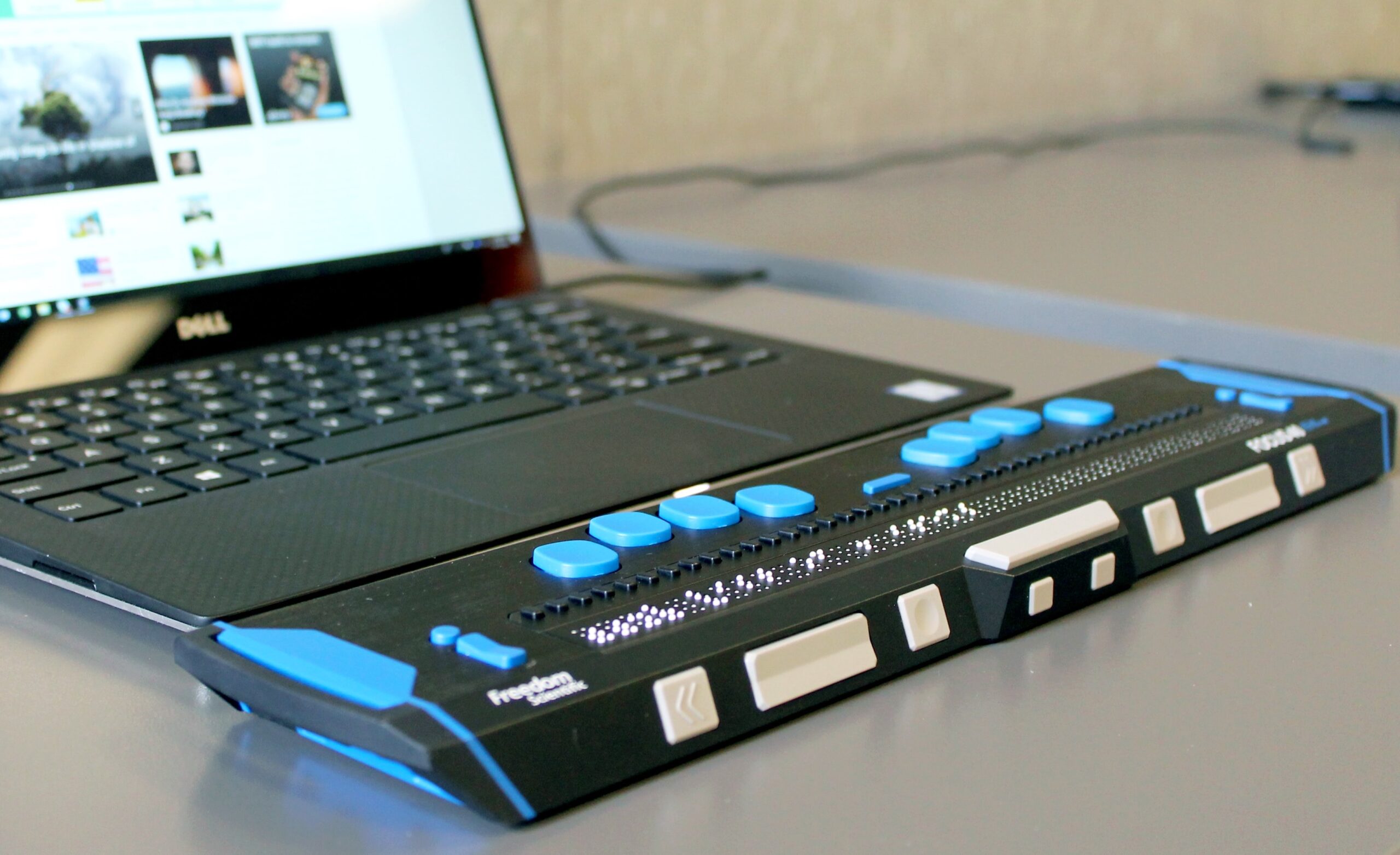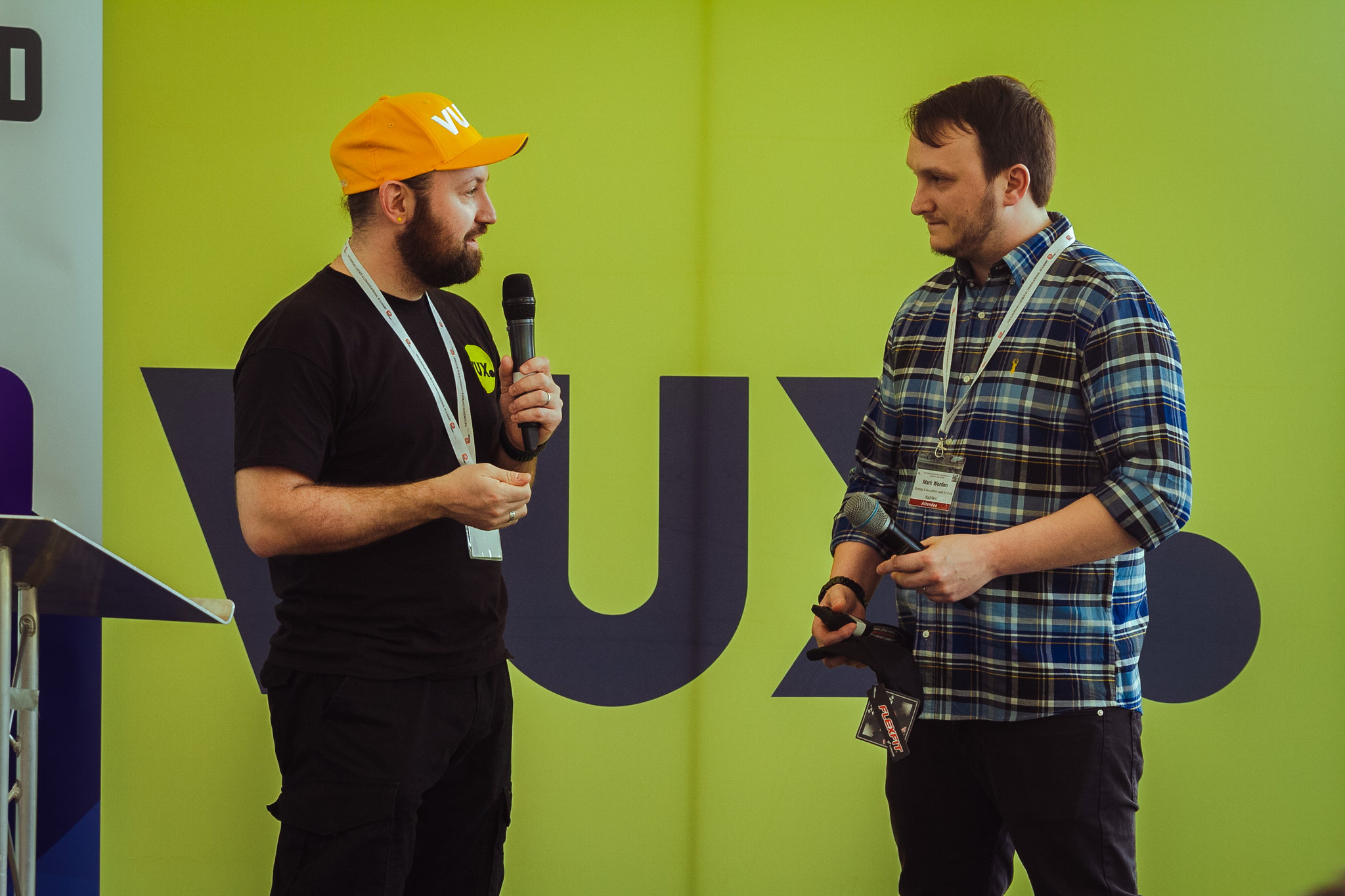
A laptop with a refreshable braille display
How can you ensure that your bank is accessible to all your users? That’s the challenge taken on by Mark Worden (Strategy & Innovation Lead for Cora at NatWest) and his team.
Mark gave a presentation about the importance of making conversational assistants more accessible for individuals with accessibility needs or impairments on VUX World’s stage at The European Chatbot & Conversational AI Summit in Edinburgh in 2023.
Accessible by design
NatWest aims to be an accessible bank by design, across all channels, including conversational AI.
“Digital accessibility is the outcome of making digital products accessible to everyone. Ensuring all people can access the same information, regardless of the impairments or disabilities or conditions they may have. It’s about frictionless digital journeys for everyone. And this is NatWest’s vision across all channels, from Cora to the mobile app, to be an accessible bank by design.” Mark Worden, NatWest
Mark’s team had to consider how to create accessible conversational AI when they created their custom user interface called Cora.
Creating a user interface from scratch is a hefty goal, but they had rationale. They found that the interfaces available from their supplier weren’t as modifiable as they needed it to be, and they were failing WCAG accessibility testing. This meant that they couldn’t design for accessibility. They needed full control over the interface to allow them to make accessible design choices.
They also wanted to keep costs down. After creating an in-house demo they found that their team could build the entire interface.
How did they do it?
As Mark explained, designing for accessibility has more benefits besides ensuring everyone can access NatWest’s services. For starters, diverse ideas can fuel innovation within the organisation.
He also said how designing for accessibility also promotes inclusivity. Around one in five people in the UK have a permanent access need, but four out of five will develop an access need at some point in their lives (whether that’s permanent, temporary or situational).
Roughly 75% of people with an access need will stop using inaccessible technology then you can see how a sizable percentage of your users could be left out when conversational AI isn’t accessible.
NatWest also want Cora to be compliant with standards, so they refer to WCAG 2.1 and the Web Content Accessibility Guidelines.

Kane Simms (left) and Mark Worden on the stage of VUX @ The European Chatbot and Conversational Summit 2023 in Edinburgh
We’ve still got some way to go
Here are Mark’s learnings from developing Cora:
- Accessibility standards haven’t yet been updated for conversational AI
- When a user presses the tab key on their keyboard, they expect the focus to move intuitively. Mark’s team found this is complex to design and requires a lot of consideration, so they did user testing with people who have access needs to define the best approach
- When there are buttons, they need to be carefully implemented in the experience, again because users expect them to function intuitively
- Users want to be able to control the speed when listening to voice recordings
- Conversation design can help a lot with accessibility – Mark’s team focused on the user’s cognitive load to ensure that users weren’t overloaded with information at any turn in the conversation
- Allow instant feedback – Cora has been designed to allow customers to give thumbs-up or thumbs-down feedback at any turn in the conversation so that NatWest can easily see the pain points in the customer journey
We should all be doing this
Hopefully you’re impressed by Mark and his team’s commitment to ensuring that all users are catered for, but it would be great if you decide to make the same commitment.
Here’s why – accessible design benefits everybody. It’s called the curb-cut effect. When designs are adapted to allow for users with accessible needs the benefits can reach all users – just like a small cut into the roadside kerb benefits people with bikes, strollers, skateboards and many more besides the curb-cut’s target group of wheelchair users.
Let’s take a cue from NatWest’s Cora, and hopefully we can all create new accessibility standards for conversational AI to the benefit of all users.




